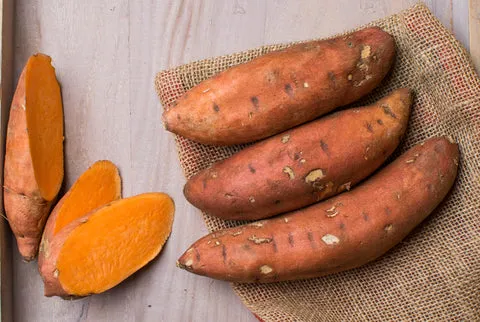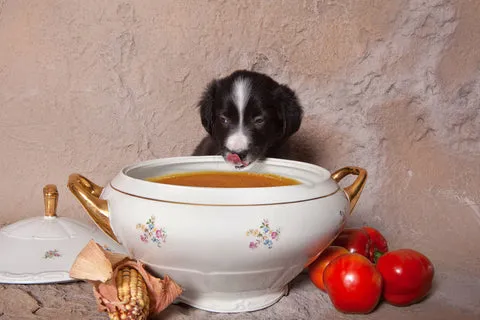When our beloved canine companions aren’t feeling their best, their normally enthusiastic appetite can quickly diminish. Just like humans, dogs often go off their regular food when battling an upset stomach or generally feeling under the weather. However, providing the right nutrition is crucial to support their energy levels and accelerate recovery. Knowing what to feed a sick dog can make a significant difference in their comfort and healing process.
It’s a good practice for every pet parent to have a few easily digestible, nutritious options on hand for those unexpected moments when your dog’s health takes a dip. While these dietary adjustments can offer comfort and support, if your dog’s condition persists or worsens, always consult your veterinarian for professional advice. Understanding their needs during illness is key to helping your furry friend bounce back.
When Your Dog Isn’t Feeling Well: Understanding Their Dietary Needs
A plain, bland diet is generally recommended for sick dogs, especially those with an upset stomach. This approach minimizes the strain on their digestive system, allowing it to rest and recover. When introducing new foods or reintroducing their regular diet, do so gradually and in small portions to avoid further upsetting their tummy. Keeping your dog well-hydrated is also paramount; ensure fresh water is always available. If they refuse to drink, try offering ice chips or a small amount of diluted, unseasoned bone broth to encourage fluid intake. Remember, any sudden or severe change in your dog’s health warrants a visit to the vet. What food items can dogs not eat is also crucial to know, especially when their system is vulnerable.
Top 10 Foods for a Dog with an Upset Stomach
Here are ten of the most nutritious and easily digestible options to consider when your dog has an upset stomach:
1. Boiled White Meat
Plain white meat, such as chicken or turkey, is an excellent choice for a sick dog due to its ease of digestion and low-fat content. Offering chicken or turkey breast provides lean protein, which can help soothe your dog’s stomach without being too rich. Always remove any skin or bones before feeding, as these pose a choking hazard and can be difficult for a sensitive digestive system to process. What cooked meat is good for dogs highlights the importance of lean, unseasoned options.
To prepare the meat:
- Rinse the meat thoroughly under cold water.
- Remove any excess fat, skin, or bones.
- Place the meat in a pot, cover it with water, and bring it to a boil. Reduce the heat and let it simmer for 15-20 minutes until cooked through.
- Once cooked, drain the water and cut the meat into small, bite-sized pieces for easier digestion.
- Allow it to cool completely before serving, either alone or with white rice or bland vegetables.
 A small Chihuahua dog looking intently
A small Chihuahua dog looking intently
2. White Rice
Both white and brown rice are common ingredients in dog foods, making them a reliable option when your dog is under the weather. While brown rice is generally more nutritious, the blandness of white rice makes it a safer and more easily digestible choice for a sick dog. It’s an ideal accompaniment to boiled chicken or turkey.
If your dog is experiencing diarrhea, white rice can also help bind their stools, assisting their digestive system in returning to normal.
To cook white rice for your dog:
- Rinse the rice under cold water until the water runs clear.
- Add the rice to a large pan, along with two parts water to one part rice. A generous pinch of salt can be added, but ensure it’s minimal.
- Bring to a boil, then reduce the heat to a simmer. Cover the pan and let the rice cook on low heat for about 18 minutes, or until all the water is absorbed.
- Allow the rice to rest and cool, then fluff with a fork before serving.
 A Collie dog looking longingly at an empty food bowl
A Collie dog looking longingly at an empty food bowl
3. Sweet Potatoes
Plain, cooked sweet potatoes are a fantastic choice for soothing a dog’s stomach and intestines. They are rich in essential vitamins and fiber, making them incredibly gentle on the digestive system. Sweet potatoes provide vital nutrients like calcium, iron, and magnesium, which can significantly boost your dog’s overall health during recovery. What vegetables are harmful to dogs is an important consideration to avoid, making sweet potatoes a safe and beneficial choice.
Never feed your dog raw sweet potatoes, as they are tough to digest and could exacerbate stomach issues. Instead, peel the skins, chop the potatoes into chunks, and boil them until soft. Once cooked, drain the water, mash them thoroughly, and serve after they have cooled down.
 Various slices of cooked sweet potato on a wooden table
Various slices of cooked sweet potato on a wooden table
4. Pumpkin
Similar to sweet potatoes, pumpkin is highly effective in alleviating an upset stomach and helping a sick dog feel better. It’s packed with vitamins that support a dog’s immune system and is rich in fiber, which aids in regulating digestion.
You can give your dog up to four tablespoons of plain pumpkin mixed with their regular meal, or alongside chicken and rice, to assist their recovery. Canned pumpkin can be as effective as fresh, provided it contains no added sugar, spices, or other ingredients. Absolutely avoid pumpkin pie filling or any seasoned pumpkin products, as these can worsen your dog’s stomach issues.
 A Husky dog with a slice of pumpkin placed to look like a smile
A Husky dog with a slice of pumpkin placed to look like a smile
5. Homemade Bone Broth
Bone broth is an excellent nutritional supplement for sick dogs, providing essential nutrients and minerals like sodium and potassium. It also significantly aids in hydration, which is often compromised during illness. When preparing bone broth, avoid using garlic or excessive salt, as these ingredients can further upset your dog’s stomach.
Being low in carbohydrates, bone broth is gentle and easy to digest, making it an ideal choice for dogs with an upset stomach.
To prepare homemade bone broth for your dog:
- Add beef or pork marrow bones, along with chicken or turkey bones, to a large cooking pot.
- Cover the bones with a few inches of water.
- Cook on low heat for 20-24 hours.
- Once finished, strain the liquid to remove all bones and bone fragments before serving.
 A small puppy licking a bowl of soup or broth
A small puppy licking a bowl of soup or broth
6. Baby Food
For puppies or small dogs struggling with an upset stomach, stage 2 meat-based baby foods such as chicken, lamb, or turkey can be an effective and easily digestible feeding option. The smooth consistency and minimal processing make it gentle on their sensitive systems.
However, when choosing baby food, carefully check the ingredients list to ensure there are no additives or ingredients toxic to dogs, such as garlic or onion powder. If you’re uncertain about any specific ingredients, always consult your veterinarian for guidance. Baby food is easy to chew and digest, making it helpful for treating an upset stomach and diarrhea.
7. Fish
Fish is a wonderful source of healthy fats and vitamins, which can significantly benefit your dog’s immune system and overall health, especially when they’re recovering from stomach issues. The strong, appealing smell of fish can also act as an appetite stimulant, encouraging your dog to eat when they’ve lost interest in food.
The best way to prepare fish for your dog is to poach it. Similar to boiling chicken, add the fish to a pan of water, bring it to a boil, then reduce the heat and simmer for 10-15 minutes until it’s cooked through. Ensure all bones are carefully removed, and cut the fish into small, manageable pieces before offering it to your dog.
8. Oatmeal
Plain, cooked oatmeal, made from rolled oats, can be a soothing food for your dog’s upset stomach. It is high in fiber, which can help alleviate constipation, and contains antioxidants that are beneficial for reducing inflammation in the stomach.
While oatmeal is good for dogs, moderation is key. Since it’s rich in fiber, giving too much can potentially worsen their discomfort. Serve it sparingly to avoid any adverse effects. What can I feed my dog everyday often includes wholesome grains like oatmeal, but proper portioning is essential.
9. Plain Yogurt
Plain yogurt, packed with probiotics and completely free of added sweeteners or artificial flavors, is an ideal food for a dog with an upset stomach. It aids in digestion and actively supports a healthy gut microbiome. If your dog is constipated, the probiotics in plain yogurt can help regulate their digestive system.
This type of natural yogurt is readily available at most local stores or supermarkets, making it a convenient option if your dog suddenly falls ill. For an extra treat on a warm day, it can even be frozen and served as a cool, soothing snack.
10. Eggs
Provided your dog is not actively vomiting, eggs are an excellent food choice when they are sick. They are gentle on the stomach and provide a robust source of easily digestible protein, which is vital for recovery. Eggs are also a great energy booster, particularly if your dog feels lethargic after an illness.
The best ways to cook eggs for your dog to ensure they are gentle on their stomach are scrambled without any butter or oil, or simply boiled. However, if your dog is experiencing vomiting, it’s best to avoid eggs completely until their stomach has settled.
Addressing Dietary Needs for Dogs with Allergies or Chronic Sensitivities
If your dog frequently suffers from an upset stomach or is often sick, it might be a sign of food-related or breed-specific allergies. Consulting your veterinarian is crucial to get an accurate diagnosis and develop a tailored dietary plan. Often, veterinarians will recommend a hypoallergenic diet featuring novel proteins or limited ingredients to identify and avoid common allergens.
Cold-Pressed Dog Food: A Gentle Alternative
Cold-pressed dog food offers a beneficial alternative to traditional kibble, especially for dogs with food sensitivities or allergies. This type of dry food undergoes minimal processing at much lower temperatures than conventional kibble. This gentle manufacturing method helps retain a higher nutritional value, preserving the integrity of essential vitamins, minerals, and enzymes that might be lost in high-heat extrusion.
Due to its unique production method, cold-pressed dog food breaks down easily in the digestive system, which is ideal for sensitive stomachs. Designed with improved all-round health in mind, it aids digestion and digests at a rate similar to raw food, making it suitable to be fed alongside a raw diet or as a standalone option for dogs needing a gentler approach to their dry food.
Insect Protein Cold-Pressed Dog Food: A Hypoallergenic Option
For dogs with severe meat-related allergies or sensitivities, insect protein cold-pressed dog food presents a complete and nutritionally balanced solution. Created with the same low-temperature pressing method, it retains vital nutrients while offering a novel protein source that is often hypoallergenic.
Insects like black soldier fly larvae contain more protein than many traditional meat sources like chicken or beef, ensuring your dog doesn’t miss out on any essential nutrients. Furthermore, insect proteins are naturally hypoallergenic and low in purines, making them an excellent dietary choice for dogs prone to sensitivities or allergic reactions to common meat proteins. This type of food is easily digestible and can be fed alone or combined with raw food, similar to other cold-pressed options.
Raw Frozen Dog Food: Tailored Nutrition
For dogs that are fussy eaters or highly sensitive to conventional kibble, transitioning to raw food can be a highly effective dietary change. Raw food, when properly prepared and balanced, is made from natural ingredients that undergo minimal processing. Many raw food diets are also grain-free, which further aids digestion and can lead to noticeable improvements in coat health, skin condition, and overall vitality.
Raw frozen dog food often comes in various formulations, such as mixes of meat, offal, and bone (e.g., an 80/10/10 ratio) or blends with added vitamins and minerals. These customizable options allow pet parents to mix in their own preferred vegetables and supplements, tailoring the diet precisely to their dog’s specific allergies or nutritional needs. This level of customization makes it easier than ever to manage a sensitive dog’s diet. What foods are good for dogs with upset stomach often includes components found in well-balanced raw diets.
Supporting Your Dog’s Health Through Smart Nutrition
Understanding what to feed your dog when they are sick or suffer from allergies is fundamental to their well-being and recovery. By providing a bland, easily digestible diet during illness and exploring specialized options like cold-pressed or raw foods for chronic sensitivities, you can significantly contribute to their comfort and health. Always remember that these recommendations are supplementary to professional veterinary advice. If your dog’s symptoms persist, worsen, or cause you concern, do not hesitate to consult your veterinarian for a thorough diagnosis and treatment plan. Your proactive care, combined with expert guidance, will help your beloved canine companion thrive. Explore more articles on Dog Care Story for comprehensive advice on keeping your dog happy and healthy!
